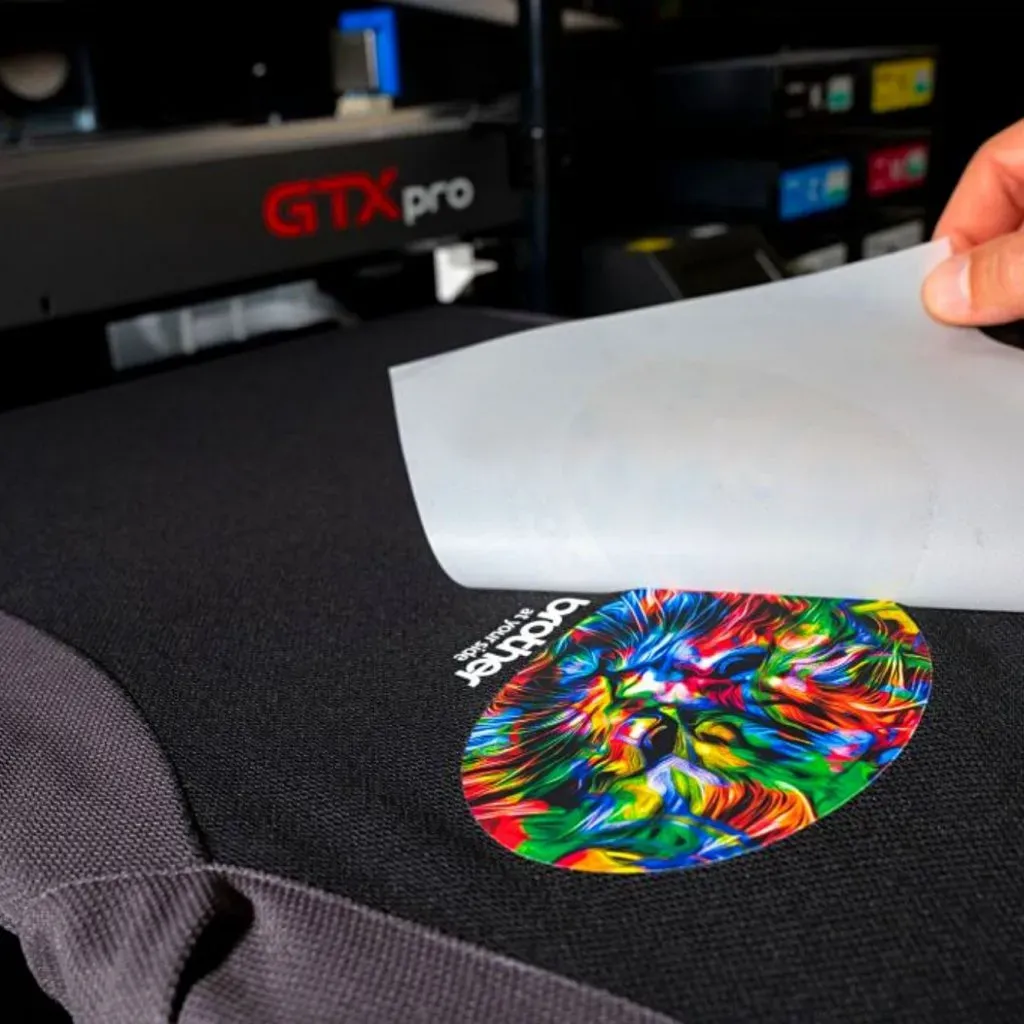DTF printing, or Direct-to-Film printing, is revolutionizing the way businesses approach custom design solutions. As a cost-effective printing method, it allows for vibrant and high-quality prints on a wide array of fabrics, making it an ideal choice for apparel and merchandise. The benefits of DTF technology extend beyond mere aesthetics; it enhances operational efficiency and reduces production costs, especially for small businesses looking to get started in the competitive market. This introduction to DTF printing will uncover its many advantages, showcasing how it can elevate your creative endeavors while meeting customer demand for personalized products. Join us as we explore the transformative impact of DTF printing on today’s printing landscape.
When we talk about Direct-to-Film printing, it’s essential to recognize it as a modern approach to printing that integrates perfectly into the growing demand for customized apparel and designs. This innovative printing technique is gaining traction among businesses seeking efficient, high-quality, and budget-friendly options for their production needs. By utilizing DTF technology, companies can produce stunning designs on various materials, appealing to a broad consumer base eager for unique and personalized products. As we delve deeper, we’ll highlight the multi-faceted benefits and advantages of adopting this state-of-the-art printing method, which stands out in today’s fast-paced and competitive landscape.
Understanding DTF Printing Technology
Direct-to-Film (DTF) printing represents a breakthrough in the world of custom printing. It leverages sophisticated technology to transfer vibrant designs directly onto fabrics, combining both versatility and ease of use. Unlike traditional methods such as screen printing, DTF printing employs specialized films that capture and hold ink directly, allowing for breathtaking detail and richness in color. This method not only simplifies the printing process but also opens new avenues for creative expression in apparel design.
The underlying technology of DTF printing provides benefits that traditional methods cannot match. For instance, DTF printers utilize water-based inks that are less harmful to the environment, aligning with growing eco-conscious consumer demands. Furthermore, DTF’s adaptability to various substrates—ranging from cotton to polyester—makes it a preferred choice for businesses looking to cater to diverse clientele, enhancing their product offerings with unique custom designs.
Frequently Asked Questions
What are the cost-effective printing advantages of DTF printing?
DTF printing is known for its cost-effectiveness, particularly for small businesses. Unlike traditional methods that require expensive setups, DTF allows for low production costs and the flexibility to print small batches, making it a financially smart choice for those looking to minimize expenses.
How does DTF printing provide custom design solutions?
DTF printing offers exceptional custom design solutions as it can easily transfer intricate designs onto various fabrics, including cotton and polyester. This enables businesses to cater to individual customer preferences and create unique products that stand out in the market.
What are the benefits of DTF technology in terms of quality?
DTF technology ensures high-quality prints that are vibrant and durable. The prints can withstand multiple washes without fading or peeling, enhancing customer satisfaction and leading to repeat business.
What makes DTF printing a versatile solution for various fabrics?
DTF printing’s versatility lies in its capability to print on a wide variety of materials, including blends of cotton and synthetic fabrics. This flexibility allows businesses to expand their product offerings while ensuring consistent printing quality across different media.
How does DTF printing improve the speed of order fulfillment?
DTF printing allows for quick turnaround times due to its efficient process, making it ideal for fulfilling customer orders promptly. This speed is particularly beneficial for e-commerce businesses, as customers increasingly expect fast deliveries.
What environmental benefits can businesses gain from using DTF printing?
DTF printing often utilizes eco-friendly inks and materials compared to traditional methods, aligning with sustainability goals. By adopting DTF technology, businesses can appeal to eco-conscious consumers while also reducing their environmental impact.
| Key Points | Details | |
|---|---|---|
| What is DTF Printing? | Direct-to-Film (DTF) printing is a method used to transfer designs onto various materials, especially fabrics, leveraging a special film for high-quality results. | |
| Key Benefits | 1. Cost-Effectiveness: Low overhead costs and flexibility for small production runs. 2. Versatility: Works on a variety of fabrics including cotton and polyester. 3. Speed: Quick turnaround ideal for e-commerce fulfillment. 4. Quality: Durable and vibrant prints that withstand washes. 5. Environmental Benefits: Eco-friendly materials and inks promote sustainability. |
|
| Industry Trends | 1. Personalization: Meets consumer demands for unique designs. 2. Software Integration: Advanced systems streamline design processes. 3. Innovation and Competition: Continuous improvement necessary to stand out. |
|
| Challenges | 1. Initial Investment: High upfront costs for equipment. 2. Competitiveness: Increasing market saturation demands innovation. |
|
Summary
DTF printing is revolutionizing the way businesses approach custom designs in today’s competitive landscape. This innovative printing method not only offers high-quality prints but also provides a cost-effective and versatile solution for various materials, including fabrics. As businesses adapt to the growing demands for uniqueness and speed, DTF printing emerges as a frontrunner, enabling them to meet customer expectations efficiently. By embracing this technology, companies can enhance their product offerings, promote sustainability, and increase customer satisfaction, thereby positioning themselves advantageously in the market.



